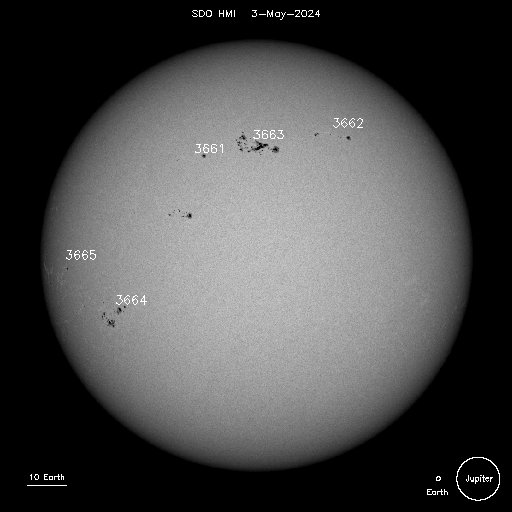So uh. Typically, large coronal mass ejections are produced by clusters of big, magnetically complex sunspots. Over the next few days, those badbois (2993, 2994, and 2995) are gonna rotate into geoeffective position, from the left side of the earth-facing solar surface into the center-right area. Unintuitively, we would call this "from East to West", because the prevailing convention is to affix East to Earth's duskward direction, and West to dawnwards. At least geometric/astronomical North and South are consistent between the Earth and sun. But, of course, the Earth's North pole is actually a magnetic South pole, by convention (field lines go "into" the Earth's "North" pole and "out of" Earth's "South" pole). And to think, if we woulda just decided electrons were mathematically positive and protons negative, North would be North. At least for now, until the poles reverse again in another hundred thousand years or so. Also worth noting that so far solar cycle #25 is very much outperforming expectations: BTW, I think we should formalize a better method than counting sunspots for quantifying solar activity (total solar irradiance might be part of it), but of course also keep sunspot number, since comparisons with the historical record are so valuable. Hopefully this is the last comment I make here.


It's not terribly unusual to see clusters like this in the +/- ~3 years surrounding solar maximum. And yes, the progression of sunspot latitude over the solar cycle progresses from higher latitudes to nearer the equator And another yes; Sunspots are generally more geoeffective the closer they are to the equator. But mostly, it's a matter of luck. 1) Whether a Carrington-level event is produced at all, and 2) Whether it is Earth directed. As for assigning a probability to the likelihood of another Carrington CME hitting Earth, it seems like a fool's errand, with one datapoint over 150 years. We don't even know what the actual plasma conditions were out there, just the Earth's response at the time, and only a vague picture of that, to boot. I'd be surprised if there wasn't an order of magnitude difference between different estimates, so I guess I find some comfort in the uncertainty. Let's pray for the 1% estimate. Of course, it's only a matter of time. Hopefully the sun holds off until this era of social turmoil resolves itself.
4/20 was yesterday, but you're still high edit: nihilism plays way better in person, srry
Interesting. Pete Riley suggested a 12% chance of Carrington class event between 2012 and 2022 https://agupubs.onlinelibrary.wiley.com/doi/full/10.1029/2011SW000734 Whereas another group says around 1% between 2019 and 2029 https://www.nature.com/articles/s41598-019-38918-8 I'm going to take the average and say 6%. TIL that near solar maxima, the Sun produces about three CMEs every day, whereas near solar minima, there is about one CME every five days.
